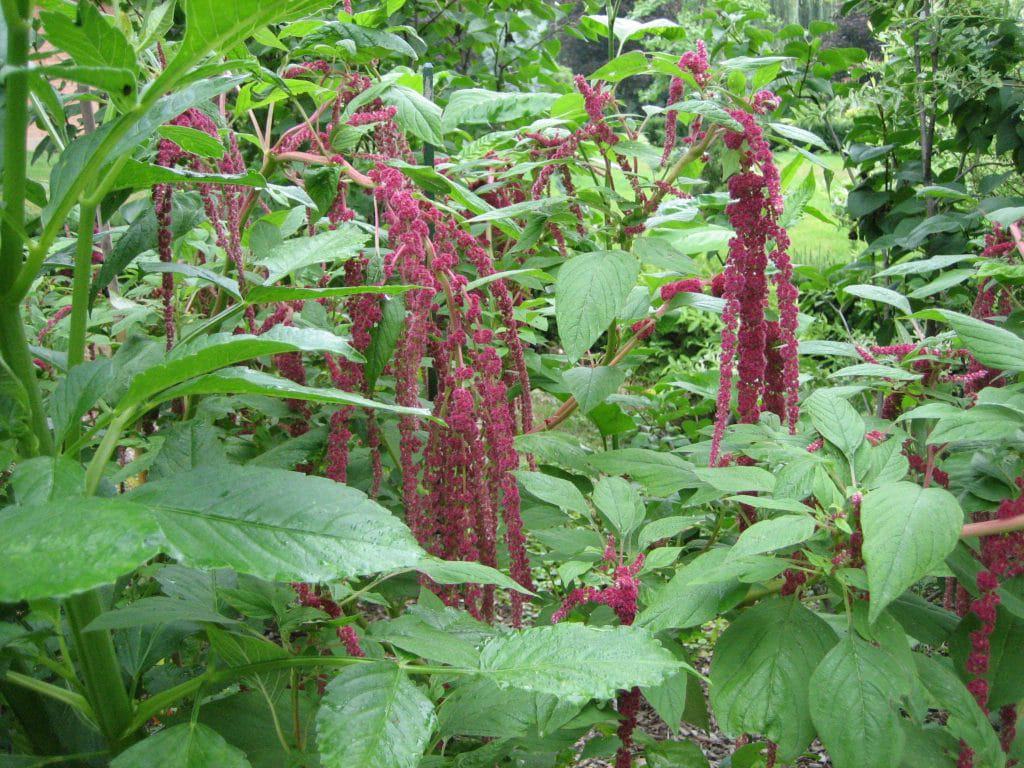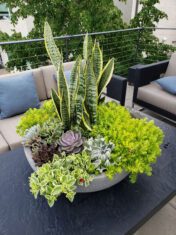
Even small gardens have room for big plants. Bold and dramatic, they can be conversation pieces that liven up the garden party. If you’re unconvinced, experiment with a tall annual one year to see if you like the effect. One recent summer, I grew a row of audacious amaranthus (A. caudatus) at the side of one of my raised beds.
With sturdy stalks that barely needed staking, the plants grew to five feet or so and the pendant plumes arched over an adjacent row of pastel pink and lilac dahlias. Like most tall annuals and annual vines, they grew quickly from small transplants, flowering by mid-summer.
As the fuzzy tassels mature, they thicken and elongate, deepening from a pale rhubarb hue to a warm, dusty burgundy. It’s commonly called love-lies-bleeding, not exactly a marketer’s dream name.
The striking plants aren’t to everyone’s taste, but isn’t that what makes a garden personal? They’re long-lasting cut flowers, too, and look impressive in a tall glass vase at the edge of a mantel, where the ropey flowers can hang unencumbered.
Amaranthus needs full sun and tolerates heat and humidity.









To Liz, Nov.13
Kiss-me-over-the-garden-gate is better known as Persicaria orientalis, a self-seeding cottage garden annual plant, with tall stems suited for hanging over a white picket fence. Once you've got some, it should conveniently re-seed itself. You can read more about it here: http://www.gardening.cornell.edu/homegardening/sc…. You can start the seeds indoors, and also experiment with some outdoors. In earliest spring, drop some of the seeds on the soil surface where you want them to grow. I hope you enjoy these, they're really charming.
A friend gave me some annual seeds she called "Kiss me over the garden gate" . Is this the same plant family? The plant is not exactly the same but is very similar.